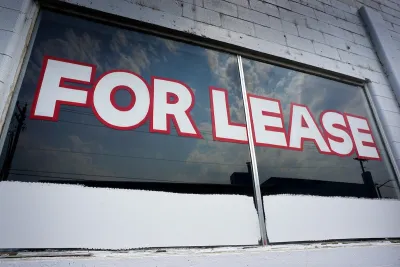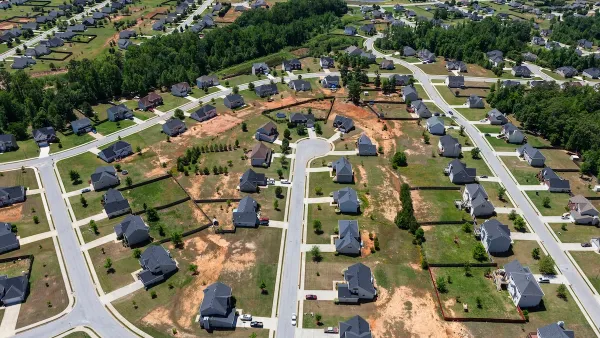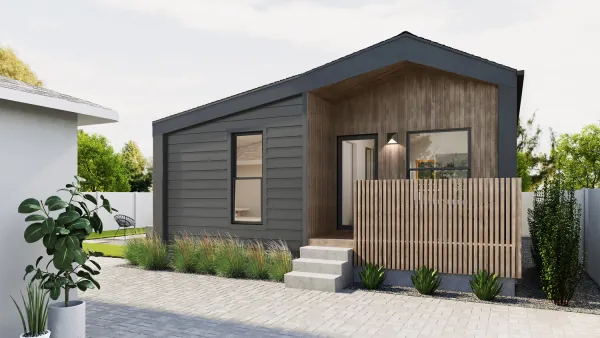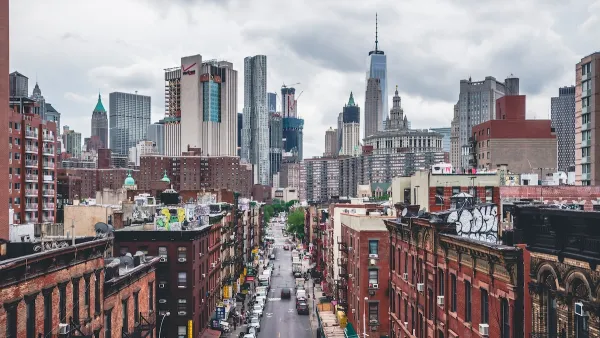Cities and states are leaning on zoning reform to help stem the housing crisis and create more affordable, livable neighborhoods.

Long relegated to the domain of city planning offices and niche interest groups, zoning has become a hot topic at local, state, and national levels as policymakers grapple with the rising cost of housing that is straining most American households.
For zoning reform advocates, U.S. zoning codes often restrict development, throttle the housing supply, and prevent the development of walkable, mixed-use neighborhoods. In recent years, cities and states are increasingly open to changing and liberalizing outdated zoning codes to encourage more affordable housing production and more sustainable places. While some experts advocate for eliminating zoning altogether, others argue for its power to guide smart, sustainable development.
Around the country, cities and states changed their regulations to address the new reality of the post-pandemic reorganization of urban life, work, and transportation. In New York City, after a protracted debate between city and borough leaders, the city council passed a sweeping zoning reform plan dubbed ‘City of Yes’ that aims to create 80,000 new housing units in the next 15 years by allowing more housing types including ADUs and streamlining office conversion, among other changes. The city of Austin reduced minimum lot sizes, which could significantly reduce the cost of land acquisition and, thus, housing.
Some key zoning stories from last year:
Adaptive reuse
One major zoning change, allowing the adaptive reuse of buildings, has helped spur redevelopment in downtowns around the United States. Although it isn’t a new concept — Los Angeles legalized adaptive reuse in its downtown in 1999 — the practice accelerated after the post-Covid shift to remote work hollowed out city centers and left some office buildings largely vacant. Office conversion, while not appropriate for all buildings, is quickly gaining momentum in central cities around the country and resulted in over 55,000 housing units begun in 2024.
In more suburban areas, some developers are looking to strip malls and other vacant commercial spaces as potential sources of affordable sites for new housing, mixed-use development, and light industry. In California, a new state law makes it easier to rezone commercial and industrial properties for residential use.
While office buildings are attracting a lot of attention, hotels are quietly becoming the top candidate for residential conversion.
ADUs and modular housing
Zoning and land use rules not only impact the locations and size of housing developments, they also regulate the types of homes that can be built. This year, advocates of modular housing amplified the potential of this type of home construction — built in pieces and assembled on-site — to produce affordable housing at a faster rate. Proposed changes in Department of Housing and Urban Development (HUD) regulations would help standardize modular construction standards and make factory-built housing available more widely, according to its proponents.
Meanwhile, accessory dwelling units (ADUs) continue to proliferate in jurisdictions that legalized them, such as Los Angeles County, which has permitted more ADU units per capita than any other California county. Although sometimes controversial, many housing advocates argue that ADUs are one relatively painless way for neighborhoods to add housing units, provide flexible housing options for seniors and students, and become more inclusive without putting too much strain on local infrastructure. Cities that want to support ADU production can make the process easier and more affordable for homeowners by reducing impact fees and providing pre-approved ADU designs. A new California law, the first of its kind, allows homeowners to sell ADUs as condos. While this could help make homeownership more attainable, the law could lead to complications as it requires the creation of a homeowners’ association to manage common areas. The law was first put into effect in San Jose. Other jurisdictions that legalized or encouraged ADUs in 2024 include Arizona, Hawaii, and New Jersey.
State-level zoning regulations
Although zoning is, historically, a local issue, some states are passing zoning-related state laws in an attempt to ease the housing crisis and prevent reluctant cities from failing to pull their weight when it comes to housing production. Many of these laws take aim at single-family zoning, which is widely blamed for inducing sprawl, keeping housing costs high, and perpetuating car dependency. Zoning reform advocates say allowing more ‘missing middle housing’ types — such as duplexes and multifamily housing — would create more affordable housing, make neighborhoods more accessible to more households, and enable seniors to ‘age in place.’
In California, a controversial provision known as the Builder’s Remedy allowed developers to build practically any project by-right in cities without state-approved housing elements. In September, the state clarified this law, reining in its free-for-all nature and establishing guidelines for projects that can be built under the law. Montana’s Supreme Court upheld state-level zoning laws that were challenged by some cities. In New Jersey, the state is pressuring cities to comply with a 1975 doctrine that sets housing production targets for each jurisdiction — not without opposition from cities. Vermont released a toolkit for “missing middle housing,” with plans to pre-approve housing designs to streamline the permitting process for builders.
Parking reform
Parking reform advocates (see: Donald Shoup) have been beating the drum about parking requirements for years, and cities are finally taking some note. Eliminating minimum parking mandates can dramatically reduce the cost of building housing, enable building on smaller lots, and reduce barriers for small businesses. Among the jurisdictions that reduced or eliminated parking minimums last year: California (banned parking mandates near transit); New York City (part of the City of Yes zoning reform package); Birmingham, Alabama; Atlanta (eliminated parking minimums near the BeltLine). Research revealed that small towns with populations under 25,000 repealed parking minimums at a rate double that of large cities.
‘Yes in God’s Back Yard’
You’ve heard of NIMBY and YIMBY; now meet the YIGBY movement. Churches and faith-based organizations are calling on cities to allow them to build housing on their underused properties, a use often prohibited under local zoning ordinances. As more houses of worship seek ways to develop their properties, changes in zoning and land use regulations could make this a valuable source of affordable housing based in an established community institution. Last year, churches from Colorado to Washington took legal action against their local jurisdictions to protest regulations that prevent them from providing housing. Meanwhile, Virginia lawmakers are considering a bill that would reduce regulatory barriers to building on church land. A similar law passed in 2023 in California.

National Parks Layoffs Will Cause Communities to Lose Billions
Thousands of essential park workers were laid off this week, just before the busy spring break season.

Retro-silient?: America’s First “Eco-burb,” The Woodlands Turns 50
A master-planned community north of Houston offers lessons on green infrastructure and resilient design, but falls short of its founder’s lofty affordability and walkability goals.

Delivering for America Plan Will Downgrade Mail Service in at Least 49.5 Percent of Zip Codes
Republican and Democrat lawmakers criticize the plan for its disproportionate negative impact on rural communities.

Test News Post 1
This is a summary

Test News Headline 46
Test for the image on the front page.

Balancing Bombs and Butterflies: How the National Guard Protects a Rare Species
The National Guard at Fort Indiantown Gap uses GIS technology and land management strategies to balance military training with conservation efforts, ensuring the survival of the rare eastern regal fritillary butterfly.
Urban Design for Planners 1: Software Tools
This six-course series explores essential urban design concepts using open source software and equips planners with the tools they need to participate fully in the urban design process.
Planning for Universal Design
Learn the tools for implementing Universal Design in planning regulations.
EMC Planning Group, Inc.
Planetizen
Planetizen
Mpact (formerly Rail~Volution)
Great Falls Development Authority, Inc.
HUDs Office of Policy Development and Research
NYU Wagner Graduate School of Public Service






























